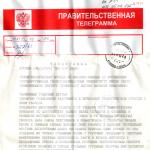Tie a stole with a Solomon knot. Crochet Solomon knot: schemes for creating weightless beauty
A hook is a tool that enables its owner to create many unique things. Each product carries the warmth of the hands and soul of the craftswoman. The crocheted pattern is original and complete. A separate place among crochet patterns is occupied by a pattern cleverly called "Solomon's knot". Knitting such a pattern is not difficult, but it requires certain skills in working with this tool. This article provides an annotation of how to crochet a Solomon knot pattern, the diagrams below are easy to read and understand even for a novice craftswoman.
The Solomon knot technique is suitable for the manufacture of many parts: from interior decor to stylish accessories and items of clothing. Scarves, stoles, capes, ponchos, openwork blouses and even swimwear - everything will look great. The article provides a master class on making a scarf, on the basis of which it will later be possible to create other more complex elements of a needlewoman's wardrobe. First of all, the article contains a description, without which no further work is possible.

The foundation of the basics
The process of tying a solomon knot is shown in the diagram below.

First you need to create a chain of 2 air loops. Next, a single crochet is knitted into the loop closer to the hook, a long loop is pulled. The working thread is caught by the crochet and passed through a long loop without tightening the last. To get a knot, you need to grab a working thread and knit a single crochet.

A long loop is pulled again and a single crochet is knitted, so the knot itself is formed. Next, a chain is knitted, based on the required length, predetermined by the final product.
It is important to take into account that the width of the finished item will be less than the length of the chain, therefore, in order to correctly calculate the length, you need to knit more than three rows using the Solomon knot technique.

Another important point is that the number of Solomon loops must be even. Otherwise, the finished canvas will be asymmetrical. When knitting the second row, you must insert the hook into the fifth knot relative to the end of the row and knit a single crochet. Further, the knitting of the Solomon loops continues with their fastening in the knots of the first row.
On the third row, three loops are knitted. Then they are fixed in the middle knot of the second row chain. In the same way, knitting of all subsequent rows continues. The seemingly difficult task becomes more and more simple as you study the schemes and progress the work.

We create chic things
After mastering the algorithm for knitting Solomon loops and creating a pattern of Solomon knots, you can proceed to creating finished products. At this stage of the provision of materials, a diagram of a scarf using the Solomon knot technique is presented.

Such a product looks very gentle and neat, it gives the image of lightness and femininity. A scarf using the Solomon knot technique can be worn both in the cold season with a fur coat or coat, and in a warm season with a jacket or cardigan.

All that remains is to tie it up.
Scheme finished product looks quite simple.

In fact, everything is not much more complicated.
First of all, you need to pick up the yarn. The thinner the thread, the more airy the scarf will look, the thicker the thread, the more massive, voluminous and pronounced the pattern will look, respectively, and the finished thing. The color of the yarn also plays an important role. On a dark yarn, the pattern will be more difficult to distinguish than on a light one, but one of our tasks is to show off the skills of the craftswoman. On the other hand, on a dark scarf, possible flaws will be poorly visible, if suddenly the needlewoman does not succeed in everything the first time.

The knitting process consists of tying ten Solomon knots in the first row, plus two knots required for a turn. Starting from the second row, the product is knitted according to the pattern until it reaches the desired length of the final knitted product. The elongated loops are knitted into the knots of the previous row.
It is very important that all the extended loops are equal in size, otherwise the scarf will be deformed and ugly.
At the end of the work, the scarf is sewn on the side that is shorter. When sewing, you need to match all the edge knots. If desired, you can add brushes or other decor to the finished product.

In this master class, you will learn how to crochet Solomon loops easily and quickly. This is a fairly detailed photo tutorial that will help you master this technique in just a few minutes. Even a novice master is able to tie Solomon's knot and create very beautiful things with its help. Take yarn and a hook in your hands - let's start training!
To create solomon loops, we recommend choosing a yarn that is not too thick and not too fuzzy. Things with a Solomon knot pattern turn out much more beautiful when the thread is smooth and thin - this emphasizes their texture and delicacy. Accordingly, we also take the hook not too thick - better metal.
Progress
We collect a row of loops.


We grab a working loop with a crochet and pass it through the next one.

When we have completed the usual loop, we grab the second thread with a hook and grab the working thread. We make a second regular loop. Pass the thread through both loops and pull the long loop again. That is, we repeat the step that was the first.


Then we lower the loops to the first row and knit a Solomon loop by passing the thread.

We start repeating everything from the very beginning. When two long loops have already been knitted, repeat the process again. So you need to knit a whole row with a Solomon pattern. Then go upstairs. The rise is performed by knitting elongated loops.

We continue knitting in rows. So we get a Solomon knot.

If you do not quite understand the photo instructions, pay attention to the diagram below. She illustrates in detail the step-by-step crocheting of Solomon loops. The picture is clickable.

If this knitting pattern also did not seem very visual to you, we advise you to watch the following video. This is a detailed tutorial on how to crochet the Solomon knot.
Crochet Solomon loops
We hope that you managed to understand the technique of creating this beautiful pattern... With it you can link beautiful scarves, shawls, napkins and capes. Train on small napkins, and then feel free to tackle something serious.
You can crochet many different openwork patterns, and one of the most spectacular is the so-called "Solomon knot". Products made using this technique are incredibly light and airy, and the pattern is also suitable for warm items such as scarves and shawls. In the master class below, we will consider the order of knitting the "Solomon knot" pattern using a regular crochet hook: diagrams and descriptions are attached.
How to crochet a Solomon knot: patterns with the technique of knitting a pattern
To knit the pattern, we will use a thin thread (50 g / 225 m) and a hook number 2.5. We collect a chain of two air loops. In the first loop from the hook, we knit a single crochet and pull out a long loop. Then we grab the working thread with a crochet hook and pass it through a long loop without tightening it. To get a knot, grab a working thread and knit a single crochet.
Pull out a long loop again and knit a single crochet, forming a knot. So we knit a chain of the required length. It should be remembered that the final width of the product will be less than the length of this chain, therefore, to calculate the width, it is recommended to knit several rows with the "Solomon knot" pattern. It is necessary to try to pull out the loops of the same size each time. The number of "Solomon loops" must always be a multiple of two for symmetry knitted fabric.
To knit the second row, insert the hook into the fifth knot from the end and knit a single crochet. We continue to knit two "Solomon loops", securing them in the knots of the first row.

In the third row we knit three loops and fix them in the central knot of the second row chain. Thus, we continue to knit all subsequent rows. This pattern is great for almost any type of fine yarn: solid and melange, smooth and frizzy.
Let's try to knit a warm and original scarf with a "Solomon knot" pattern
To master this knitting technique, it is worth practicing on simple things. For example, openwork scarf from thin mohair will fit perfectly into the wardrobe of any fashionista and will be appropriate as in any weather.
Necessary materials:- 100 g thin mohair yarn white or light gray;
- hook number 6.
The length of the product is about 150 cm, the width is about 20 cm. The diagram of the scarf is shown below.

To obtain the required width, in the first row we knit 10 "Solomon knots", including two knots for turning. Starting from the second row, we knit according to the pattern until the required length of the knitted fabric is reached, knitting extended loops into the nodes of the previous row. Make sure that all the extended loops are approximately the same size. At the end, we sew the scarf along the short side, combining all the edge knots.
We make a shawl with a "Solomon knot" pattern with a description and diagrams
Unusually beautiful shawls are obtained by combining the "Solomon knot" and more dense patterns, for example, lush columns... Below is a master class on knitting one of the most spectacular products.

- 250-270 g of yarn (composed of acrylic and angora, 500 m / 100 g);
- hook number 2.5.
We start knitting a shawl from the bottom corner of the triangle shown in the diagram below.

We dial 4 air loops and knit one double crochet in the first of them. In the first row we knit four lush columns with arches of three air loops between them. After knitting the last lush column, pull out a long loop and turn the canvas. In the second row we knit two lush columns with three air loops between them. Then we knit a "Solomon knot", one double crochet, an arch of three air loops and another double crochet in the middle arch of the first row. Then we repeat the "Solomon knot" and lush columns separated by an arch.
In the third row we knit a group of lush columns, "Solomon knot", four lush columns with arches of 3 air loops, "Solomon knot" and another group of lush columns. In the fourth row, between the extreme groups of lush columns, we will knit two "Solomon knots", two arches and two more "Solomon knots". Thus, lush columns and "Solomon knots" will alternate in each row.
We continue to knit all subsequent rows according to the pattern. We should get a triangle with openwork pattern of lush columns and elongated loops in the center, framed by a pigtail of double lush columns at the edges.

We knit the shawl until the required length is reached, periodically trying it on. At the end, we tie the upper part of the resulting triangle with one row of single crochet posts, cut and carefully thread the working thread.
We decorate the product with a long fringe. To do this, we cut the yarn into pieces of the same length, fold them into bunches and use a hook to attach them in the center, clinging to the first row of lush posts in a pigtail. Trim the resulting fringe with scissors. It should be borne in mind that almost a whole skein of thread can be spent on finishing a shawl.
Related videos
We suggest fixing the technique of making the "Solomon knot" pattern and using it to tie other products by watching the detailed video tutorials below.
In the season of dank and cold weather, you really want to warm yourself with something soft, warm and beautiful. An excellent solution would be a stole self made... Below in this article, an algorithm will be presented on how to crochet a stole with diagrams and descriptions.
A bit of terminology
A stole is a cape that resembles a scarf, but at the same time has a row distinctive features... Firstly, the stole is at least fifty centimeters wide and about two meters long, and secondly, the stole, unlike a scarf, is worn not around the neck, but over the shoulders of the fashionista.
If we go deeper into history, then cavemen began to wear stoles, which they threw on their shoulders the skins of the animals they killed. Then they began to insert lacing into these skins, and a little later to ennoble the appearance of the stole.
Fashion for stoles in more modern form, to which the fashionistas of our days are accustomed, was introduced by the wife of King Philip I in France in the 17th century.



Initially, only a fur or a cape trimmed with furs along the edges could be called a stole. Today stoles are made of cotton, silk, wool, acrylic and many other materials, a choice of textures and colors for women modern world just huge. And the very purpose of a modern stole is not only and not so much a warming character as an opportunity to show the status and sense of style of the hostess. Many women of fashion adorn an already elegant product with bright brooches. In this situation, the important point is not to overdo it with the decor.
Enough original and unusual decision will crochet the stole yourself. These photos show options for finished products that are striking in their beauty.




A selection of the best lessons
For those who decided to create such beauty, this article provides lessons on how to crochet a stole. These algorithms will be understandable for both experienced craftswomen and novice needlewomen.
- openwork stole with an original border;


Please note that this stole took two skeins of yarn with a density of 800 m per 100 grams.
To knit the product in the photo, a half-woolen fabric was taken (consisting of 51% acrylic), and such a stole can also be knitted from thin mohair or from grass. The finished product will also look very nice, and hook number 3 is suitable for all these types of yarn.
The stole fits quite simply, one way. The hem, located at the edges, is knitted immediately along with the main pattern. The total size of the repeats of the main ornament depends on the planned size of the finished product.
- ribbon lace stole;


Ribbon lace - very beautiful technique knitting. Products in this technique are knitted from a variety of yarns, including mohair and thick yarn. The process of creating a unique stole made using the ribbon lace technique is described step by step below.
The finished product took 200 grams of semi-woolen fabric. The stole is crocheted number 3.
The finished stole is a separate interconnected openwork rows. The length of each row depends on the desired length of the finished product.
The mechanism for knitting directly tape lace is shown in this diagram:

Below are videos on the topic:
- stole, knitted with a pattern of leaves;
One of the most unusual options for a stole, crocheted, is a stole with a pattern of ooze leaves.

Such a pattern resembles something from the motives of village life, a cozy hut and an elegant Russian beauty close to nature.
Knitting such a pattern is not difficult at all. It is important to stick to the scheme.

The description of knitting will also not be voluminous due to its simplicity of execution.
To make the model from the picture, it took 300 grams of semi-woolen yarn and hook number 3. The size of the finished product is 1.8 * 0.7 meters.
Knitting begins with 220 stitches. Then knitting continues according to the pattern until the product reaches the size required by the craftswoman.
Video on the topic of making a stole with a pattern of leaves.
- stole with solomon loops.
This type of technique for knitting a stole, although it is the last on the list, is outward appearance the finished product is in no way inferior to the previous options. This stole looks very delicate, delicate, demonstrates the skill and imagination of the craftswoman.





